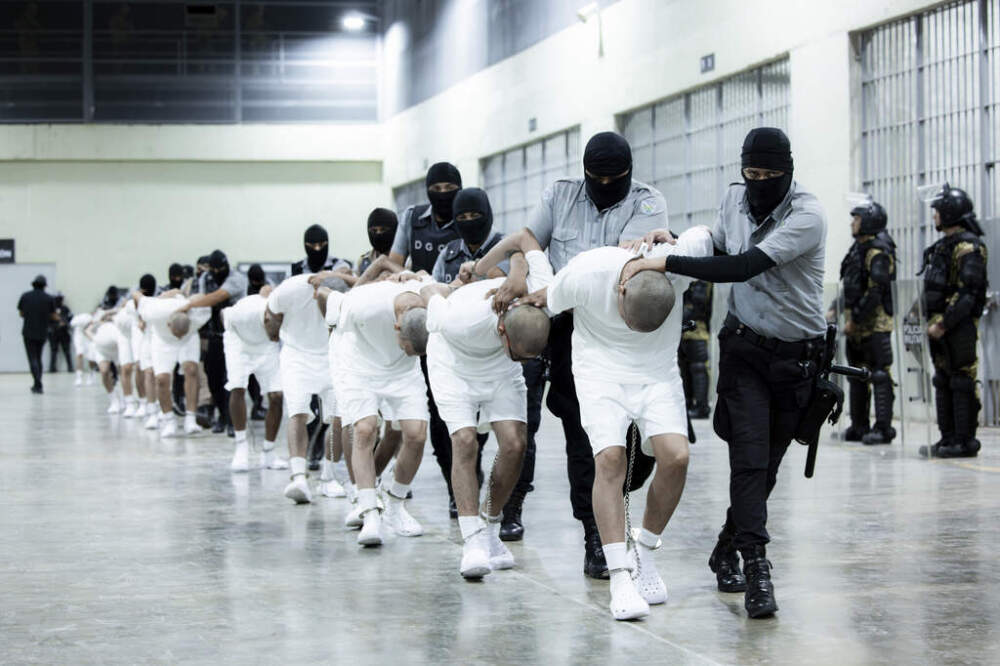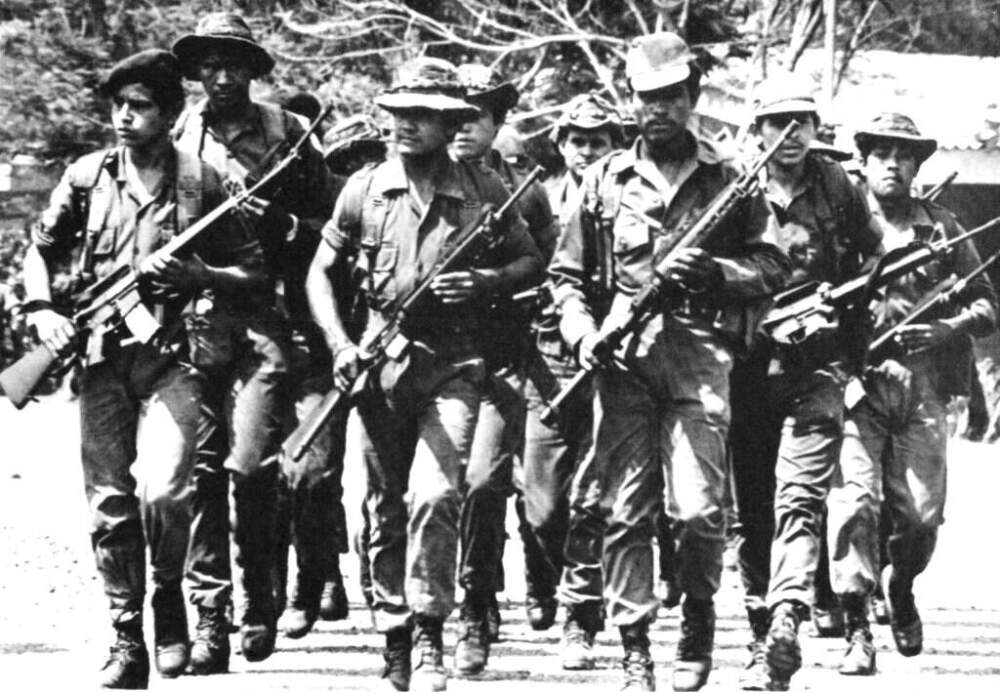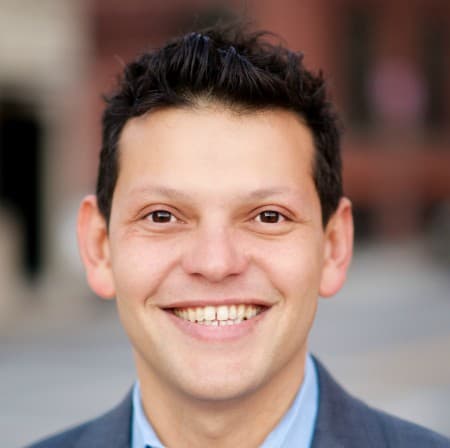Advertisement
Commentary
5 things to know about El Salvador

Earlier this year, President Nayib Bukele of El Salvador struck an agreement with the Trump administration to accept deported migrants and detain them in mega-prisons. The deportation flights have made headlines for weeks, as legal challenges continue to unfold in American courts.
What’s been missing from the torrent of media coverage is context — how El Salvador’s past and present are deeply intertwined with U.S. policy. Based on decades of experience working alongside the Salvadoran community, here are five essential points to understand the country’s political, social and economic realities, including the roots of migration.
1. One in five Salvadorans fled during their country's civil war
From 1979 to 1992, El Salvador was engulfed in a brutal civil war. Entire villages were massacred, including El Mozote, where approximately 900 civilians were killed by Salvadoran soldiers who had been trained by the United States. The right-wing military regime, in the pockets of El Salvador’s corrupt oligarchy, also assassinated notable figures, including Jesuit priests, American nuns, and Archbishop Óscar Romero, a staunch advocate for low-income people and an outspoken critic of government abuse.
The civil war displaced one in five Salvadorans, scattering families across borders. Many Salvadorans in the U.S. are part of this diaspora. At least 180,000 Salvadorans rely on immigration relief through Temporary Protected Status (TPS), a humanitarian lifeline the Trump administration has sought to end, triggering a legal battle with the organization I lead, Lawyers for Civil Rights in Boston.
2. Democracy is fragile and nonlinear
The end of the civil war created opportunities for institution-building. Despite deep wounds, Salvadorans forged a political system that facilitated the peaceful transfer of power between two parties: right-wing ARENA and left-wing FMLN. Based on electoral outcomes, these parties alternated power, marking a significant milestone for Salvadoran democracy.
But in 2019, Nayib Bukele, a 37-year-old Salvadoran business man, won the presidency in a landslide by running as a candidate outside the traditional ARENA-FMLN ecosystem. Bukele’s rise was driven by widespread frustration with corruption and gridlock, and his pledge to reduce crime and gang violence. Bukele’s presidency is rife with concerning trends, including the consolidation of executive power, an erosion of checks and balances and weakened judicial independence. Nevertheless, Bukele maintains strong public support and impressive approval ratings.

3. Violence in El Salvador didn't begin or end with the civil war
Despite peace accords and a U.N.-led truth commission, El Salvador remains plagued by staggering levels of violence. Gang violence is the civil war’s sequel. In 2015, the country earned grim international headlines as the homicide capital of the world, with one murder every hour. MS-13 and its rival gang Barrio 18 grip many parts of the country.
The proliferation of gangs — many with links to Salvadorans who have been deported from the United States — accounts for some of the violence. But focusing only on gangs such as MS-13 and Barrio 18 obscures deeper truths and complex dynamics. In El Salvador, violence is not episodic; it’s systemic.
In January 1932, for example, the government slaughtered approximately 30,000 campesinos and indigenous Pipil people in La Matanza — Spanish for “The Massacre.” Similar violence resurfaced in the 1970s with the massacre of students and during the civil war with the mass killings of peasants, including those at Sumpul River. The country became known for escuadrones de la muerte — death squads — and its brutal patterns of extermination.
Advertisement
Even after the civil war, violence continues to be an entrenched political and social tool to suppress and neutralize threats. In recent years, actual or perceived gang members have been murdered by Salvadoran police. Even today, under Bukele, the government has launched sweeping crackdowns targeting purported gang members under the so-called “state of exception.” Tattoos often unleash a cascade of suspicion, scrutiny and confinement.
To be sure, Bukele’s mass arrests and his administration’s dismantlement of gang structures have restored a sense of public safety for many Salvadorans. But whether this security is sustainable — and whether it strengthens or weakens democracy — remains an open question. And even as safety improves, migration persists with more than 12,500 Salvadorans detained at the border since October.

4. American influence runs deep — and began long before the Cold War
While U.S. involvement in El Salvador tends to be associated with anti-communist efforts during the Cold War, American influence extends much further back. The U.S. formalized diplomatic relations with El Salvador in 1863. By the late 1800s, trade between the two nations flourished and gunboats protected American interests in the region. The secretary of state visited in 1912, and President Herbert Hoover visited in 1928. During the Cold War, American influence only intensified.
In the 1980s, the U.S. provided approximately $7 billion in aid to prevent left-wing guerrillas from gaining power (that’s almost $1 million per day). American aid increased the Salvadoran army’s ability to wage war and prolonged the conflict.
American intervention focused almost exclusively on empowering and legitimizing the Salvadoran military even as soldiers committed atrocities. This choice tied U.S. interests to right-wing Salvadoran oligarchs and military elites, aligning it against those most impacted by the war.
5. Remittances are El Salvador's lifeline
For centuries, El Salvador had a monocrop economy, first driven by indigo and then, coffee. Private armies and paramilitary forces defended large farms known as haciendas, maintaining feudal conditions into the 20th century in a country where land and wealth were concentrated in the hands of 14 families.
After the civil war, El Salvador implemented aggressive neoliberal economic reforms: privatizing state-owned utilities and banks, promoting free trade and replacing the local currency with the U.S. dollar. However, these reforms failed to meaningfully produce jobs or broad-based growth.
In El Salvador, violence is not episodic; it’s systemic.
El Salvador remains deeply unequal and poor, with 1 million of its 6.3 million people under threat of starvation. Many households are heavily dependent on remittances, money sent back home by Salvadorans who are living and working abroad. Remittances account for approximately 24% of the country’s GDP, one of the highest rates in the world.
Migration is central to El Salvador’s social and economic fabric, helping to buoy the economy. Without the money sent back from the U.S. and elsewhere, the country would plunge into an economic depression. Stricter U.S. immigration policies and TPS rescission will send shockwaves through the country's social, economic and political landscape. Bukele’s willingness to take in deported migrants could be a calculated move to ease Trump-era pressures on Salvadorans.
El Salvador is a source of hope — and a warning.
Salvadorans rebuilt war-torn communities and forged transnational networks—a testament to extraordinary resilience in the face of immense adversity. Rebuilding is seen as an ongoing responsibility: reconstruyendo el tejido social, or reweaving the social fabric.
In a world grappling with rising inequality, the erosion of democratic norms and migration driven by economic pressures, violence and climate change, El Salvador reminds us that democracy must be actively constructed—and safeguarded—across generations. Without vigilance, even hard-won progress can unravel.
Follow Cog on Facebook and Instagram. And sign up for our newsletter, sent on Sundays. We share stories that remind you we're all part of something bigger.
